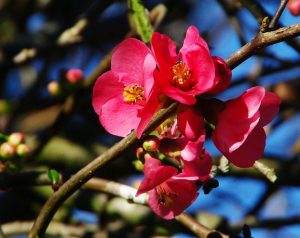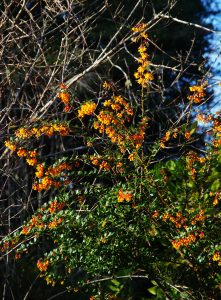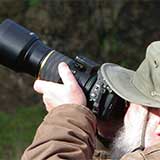Tillamook Coast Life Blog
Local History, old garden plants, and native plant communities
Can’t afford a trip to the Mediterranean? Just plan one to the Oregon Coast.
Plant climate
The Oregon Coast enjoys what is known as a Mediterranean climate. Mediterranean climates are characterized by mild winters with few if any hard freezes, and relatively dry summers, with most of the annual precipitation coming as rain in the fall, winter and spring months.
Although Oregon Coast summers tend to be much cooler than those in Sicily, Sardinia, or Mallorca, the climate still qualifies as Mediterranean. These climates are found in several places around the world, including coastal southern Chile, western Australia, and the Cape of Good Hope region of South Africa.
Although the natural vegetation in these regions appears quite different, the dominant plants are adapted to similar conditions and many grow well and persist when transplanted among these regions.

Settlers in Tillamook established home gardens to grow vegetables, orchards of fruit and nut trees, and also grew flowering plants and shrubs for their beauty.
Of course, they had far less access to nurseries and seed packs than today, so they tended to acquire plants from neighbors, relatives, and travelers.
Certain shrubs, trees, and flowers can persist for decades, even centuries after planted in a garden. These plants remain as indicators of former habitations. Locally, many of these are from Mediterranean climates, and others are cultivars that happen to fit our landscape better than their parental species.
Take Darwin’s Barberry for example: a close relative of our native Oregon Grape. For a while Darwin’s Barberry was a favored garden plant in regions with climates similar to coastal southern Chile, including the Pacific coast, the British Isles, and New Zealand. Here on the Oregon Coast it persists and occasionally reproduces, but does not aggressively invade native communities. It is not clear who first introduced it locally, but it is easy to imagine a sailing ship stopping in Puerto Montt for supplies after a difficult passage around Cape Horn, and the captain picking up a few local plants for his home in San Francisco or Astoria.

These persistent garden plants can give us insight into patterns of settlement and life over the past 150 years.
Local finds
On an early spring field trip in the Upper Siletz Basin about 18 years ago, I found a scattering of Daffodils blooming under a canopy of leafless alders.
These were “old fashioned” Daffodils – all yellow, and with flowers a bit smaller and less frilly than some of the ones we can buy today.
A short search led to the remains of the foundation of a homesteader’s cabin nearby – a foundation that we might not have noticed. The location was at least 10 miles as the crow flies (and at least 20 by road) from the nearest place people are living now. So, these Daffodils provided testimony to the wide footprint homesteaders had on our landscapes.
On another occasion, I was walking into a Siuslaw National Forest stream restoration project site, and in a small grassy meadow I found a cluster of Cup Plants. Again, this was a remnant from a homesteader’s garden – a showy sunflower relative, but also a plant used medicinally by plains tribes, and perhaps by the homesteaders.

